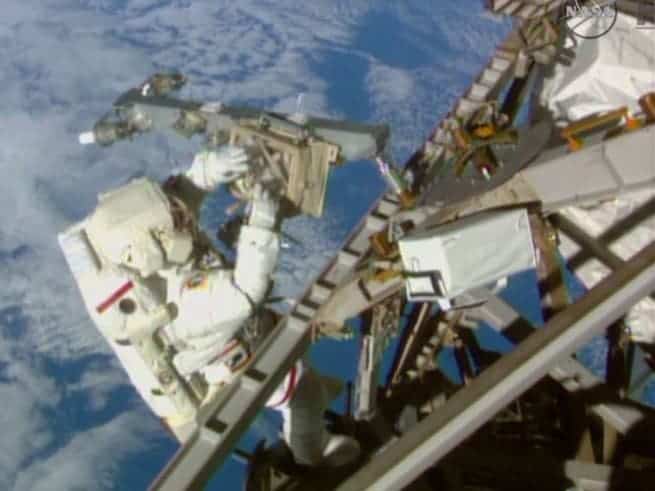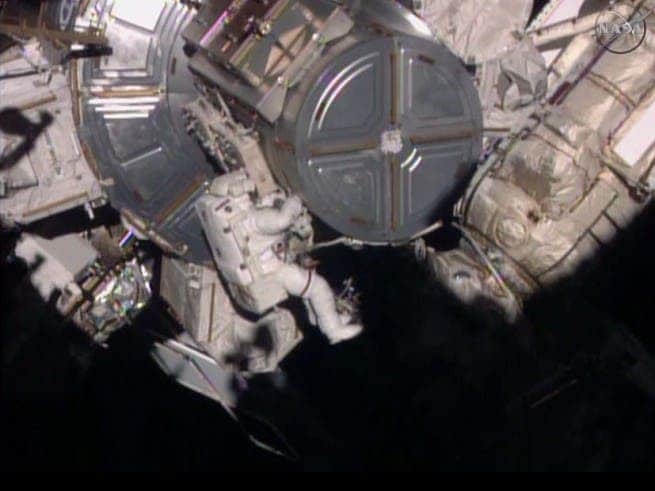There’s something so eerily exciting about spacewalks… the idea of walking into outer space with only a cable connection you to a ship rotating at 7 km/s some 400 km above the Earth is just… out of this world – literally! Now, two astronauts have completed ISS upgrades is what can only be described as a picture perfect spacewalk. This entire spacewalk took one hour less than planned for.

Barry Wilmore and Terry Virts journeyed outside the station once more to complete their third and final spacewalk. The upgrades they made will allow new International Docking Adapters (IDAs) to be installed later this year. However, it will be a while before the IDAs are completed – astronauts require SpaceX to ship some components. After they will be installed, the ISS will be able to receive more cargo. The space station is expected to receive commercial dockings from both SpaceX and Boeing starting 2017.
The NASA astronauts each installed a boom with two antennas for the Common Communications for Visiting Vehicles (C2V2) system. Everything went smooth and there were no major problems, despite a minor amount of water accumulation in one of the spacesuits – NASA engineers are working to determine the cause of this minor issue. The astronauts also connected the C2V2 to GPS and antenna systems aboard the space station.

Thus far, in total, astronauts have spent 1,171 hours and 29 minutes in all 187 spacewalks – with the majority of these spacewalks being maintenance works for the ISS.
The International Space Station (ISS) is a habitable artificial satellite, in low Earth orbit. It was launched in 1998 but its modular structure has greatly increased since then.
Source: NASA.
Was this helpful?



